Short Sunderland W3988, Doonbeg, Co. Clare, December 1941
At about 18.30 hrs. on 3rd December 1941 a Royal Air Force
Sunderland flying boat crashed on the sea about 2 ½ miles from
land at Carrowmore near Doonbeg, Co. Clare. Three of the crew of
eleven made their way to shore but one was so exhausted he
passed away on the beach. The remaining nine occupants
were drowned. The aircraft was later washed ashore on the strand
in a wrecked condition.
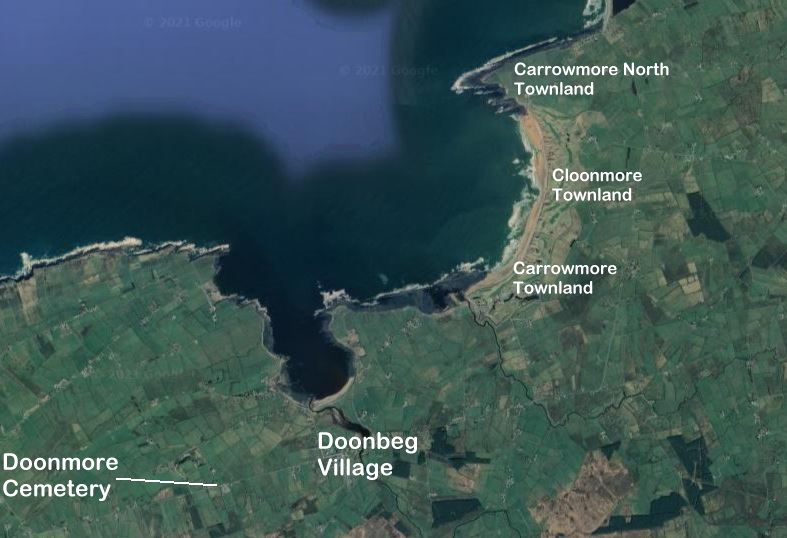
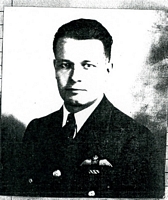 F/Lt James Grant FLEMING DFC 40380 (Pilot) (Interned, Escaped, later Killed in Action 1944 |
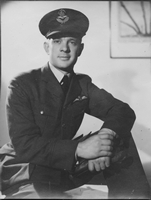 P/O Wilfred Sefton EMMETT NZ401377 RNZAF (Pilot) + Missing in action |
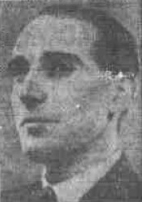 Sgt Eric Willows JACKSON 999009 + Missing in action |
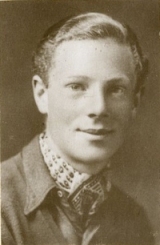 P/O Eric Gerald MARKER 101048 + |
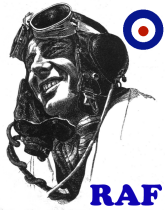 Sgt Sydney James EPPS 522263 (W.Op./Air Gnr.) + Buried in Miltown Malbay |
 Sgt Maurice Walter Gerald FOX 933498 (W.Op./Air Gnr.) + Buried in Miltown Malbay |
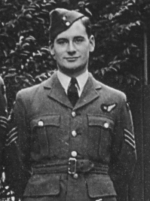 Sgt James Cannell MASTERSON 911625 (Interned, Died 2005) |
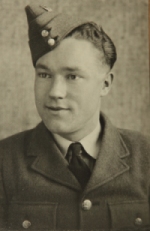 LAC Frederick Walter LEA 904349 (Flt. Mech.) + Buried in Miltown Malbay |
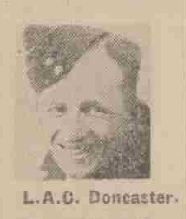 LAC Arthur DONCASTER 743595 + Buried in Killard Church of Ireland Cemetery, Doonmore |
 LAC Andrew Patrick WALKER 972825 + Missing in Action |
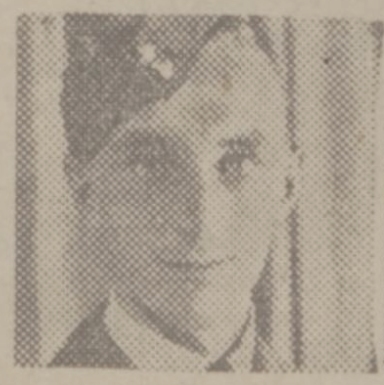 AC1 Albert Everall BENNETT 1081395 + Buried in Killard Church of Ireland Cemetery, Doonmore |
If you can provide any help in finding relatives of the six
members of the crew without a photo above I would be most
grateful:
Sgt Maurice Walter Gerald FOX Aged 20, Son of Lionel
Thomas Andrew and Edith Emma Fox, of Erith, Kent
LAC Arthur DONCASTER Aged 30, Son of Ernest Arthur
and Ida Dorothy Doncaster, from Mansfield, Nottingham/Derby
LAC Andrew Patrick WALKER Aged 19, Son of Thomas and
Anna M. Walker, of Glasgow.
AC1 Albert Everall BENNETT Aged 19, Son of Thomas and
Annie Bennett, of Liverpool; husband of Norah Elizebeth
Bennett, of Liverpool.
Sgt Eric Willows Jackson Aged 24, Son of Thomas Norman
and Dorothy Marguerite Jackson, of Leeds, Yorkshire
The Irish Army file related to this crash in the Military
Archives in Dublin records in stark wording the sad events of
December 3rd, 1941. This below and other examples in italics are transcriptions of
files in the G2/X/0922 file in the Irish Military
Archives. These as might be expected contain errors and
omissions that one might expect from a contemporary
document. They were being typed and prepared on a daily
basis by Irish Army personnel based on reports received and
their own observations. A number of the Army reports
name the strand as 'Duckmore' which is the pronunciation
locally, but it refers to Doughmore Strand. In the
report below, F/Lt Fleming's middle name was originally
believed to be 'Brandt'.
"Crash of British Sunderland Flying
Boat at Carrowmore, Co. Clare On 3/12/1941
__________________________________
At about 18.30 hrs. On 3rd December a British
Sunderland flying boat crashed on the sea about 2 ½ miles
from land at Carrowmore near Doonbeg, Co. Clare. Two of
the crew of eleven made their way to shore but the
remaining nine occupants were drowned. The aircraft was
later washed ashore on the strand in a wrecked condition.
The particulars of the survivors are as follows:-
(a) 40380 Flight Lieut. James Brandt
Fleming D.F.C.
Age 21 years: Religion Presbyterian
Next of Kin: Father, address: C/O Dr S.C.W. Morris
Souchen Buildings
Calgary, Canada
(b) 911625 Sergt. James Cannell
Masterson,
Age 21 years: Religion Church of England
Next of kin: Father, William
Address: Swanton, Abbot, Norfolk, England.
Both survivors were taken into
military custody on arrival at the shore by a military
patrol and after being held over night at Doonbeg were
transferred to Mallow Military Hospital on the 4th
December. Lieut. Fleming and Sergeant Masterson were
suffering from shock as a result of their immersion and
Masterson in addition had abrasions on both legs. Both are
still in Mallow Hospital on this date (9/12/1941)
The bodies of four other members of
the crew were washed ashore near the scene of the crash
and were buried locally with military honours."
The file details the events of the days following the crash and the task of dealing with the bodies of the airmen and the making safe of the aircraft wreckage.
Royal Air Force records show that on this date the following young airmen of 201 Squadron RAF were involved in the above events. This is some of their story.
F/Lt James Grant FLEMING DFC 40380 (Pilot) (Interned
in the Curragh Internment Camp, Escaped in 1942 and was later
Killed in Action in 1944.
P/O Wilfred Sefton EMMETT NZ401377 RNZAF (Pilot) +
Missing in action
Sgt Eric Willows JACKSON 999009 (Pilot) + Missing in
action
P/O Eric Gerald MARKER 101048 (Obs) + Missing in
action
Sgt Sydney James EPPS 522263 (W.Op./Air Gnr.) +
Buried in Miltown Malbay
Sgt Maurice Walter Gerald FOX 933498 (W.Op./Air Gnr.)
+ Buried in Miltown Malbay
Sgt James Cannell MASTERSON 911625 (W/Op./Air
Gnr)(Interned in the Curragh Internment Camp, released in 1943
and died in 2005)
LAC Frederick Walter LEA 904349 (Rigger/Flt. Mech.) +
Buried in Miltown Malbay
LAC Arthur DONCASTER 743595 (Fitter) + Buried in
Killard Church of Ireland Cemetery, Doonmore
LAC Andrew Patrick WALKER 972825 (Fitter) + Missing
in Action
AC1 Albert Everall BENNETT 1081395 (Rigger) + Buried
in Killard Church of Ireland Cemetery, Doonmore
It is noted here that the Commonwealth War Graves Commission
record the burials of Bennett and Doncaster as being in
Killard Church of Ireland Churchyard, which is to be found in
Doonmore townland, across the road from Doonbeg GAA
grounds.
The events surrounding the crash on December 3rd 1941
Local Garda and the Military Look Out Posts on the west coast of County Clare made observations of a circling aircraft from about 17:00 hrs on December 3rd 1941. The aircraft was found to have crashed when making a landing at about 18:30 that evening and in the subsequent hours, two airmen were found alive in the vicinity, followed by the bodies of two of their crew mates. The earlier sightings had been reported to the 13th Cyclist Squadron based at Kilrush, and Captain Daly there took a military party out to the village of Doonbeg anticipating that a landing or crash might occur. They arrived at the village after 19:00 hrs and after speaking with members of the Local Defense Force (LDF) they found F/Lt Fleming and then Sgt. Masterson being cared for by locals.
Leaving the survivors under guard Captain Daly reported that the wreckage of the aircraft was being washed up, upside down onto the beach north of Doonbeg. He placed this also under guard. The LDF in the surrounding areas were called out to keep watch on the beaches. One body, identified the next day by Fl/Lt Fleming as LAC Doncaster was found on the beach that evening. An Air Corps officer, Lt Woods had arrived late that evening from Rinneanna aerodrome. A further body, that of LAC Bennett was found that evening.
The army recorded on December 4th that: The plane was washed in to within 80 feet
of high water mark and is badly damaged.
One wing is missing. There are supposed to be four depth
charges aboard also some bombs”.
Southern Command Ordnance Officer, Comdt. R Shaw, went to the
scene on the 4th. There, with the help of one of his officers
they made safe a number of depth charges and smoke floats,
flares and small bombs. One of the depth charges was destroyed
on the beach the following morning due to damage to its
detonator. The remaining recovered munitions were sent by
truck to Limerick. During the 5th of December, Cmdt. Shaw had
members of the Cyclist Squadron dig away the sand from around
the beached aircraft between tides and he recovered further
munitions from the aircraft after cutting away wreckage. Due
to be damage some of these were also blown up on the beach.
The wreckage was photographed on the morning after the
tragedy and the family of the two Michael Stacks who helped
rescue members of the crew provided the photo below.
This photo shows the wrecked forward fuselage upside down on
the beach. The rectangular hole above the men in the
photo was the opening for the aircraft's weapons bay, out of
which the aircraft's armament would carried on a
carriage. At the top of the image one can see the step
of the aircraft boat hull. Where the men are standing
should be the aircraft's wing, part of which appears to be on
the beach. The entire rear fuselage has been ripped away
revealing the interior of the aircraft. The aircraft's
name, PLUTO, would be very close to the door visible to the
front, but hidden behind the structure on the beach or perhaps
destroyed or buried in the sand.
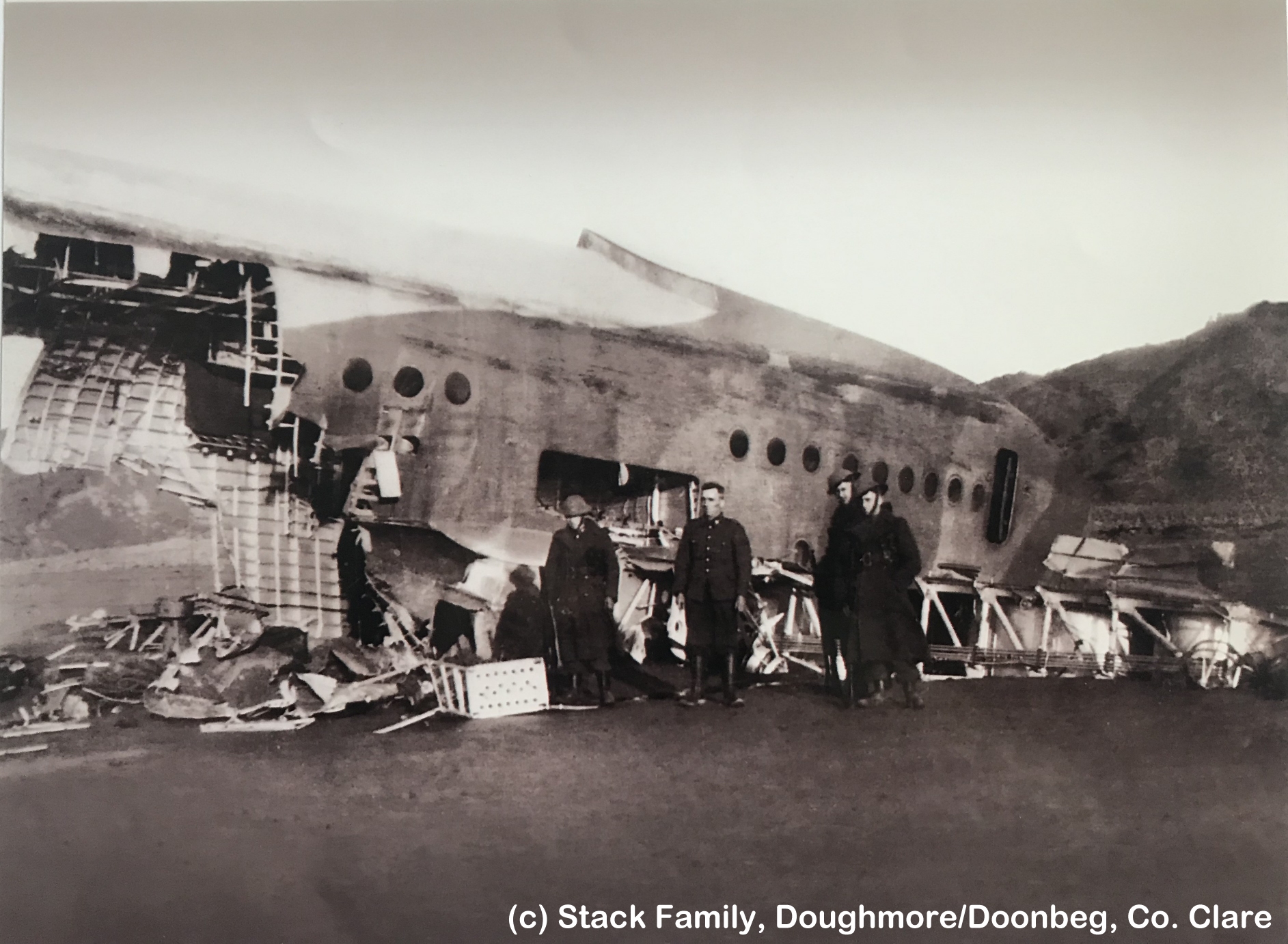
An inquest was held by the authorities in Doonbeg on December
4th, where the two bodies found the previous evening were
formally identified and their deaths registered. They were
buried in the Protestant Cemetery in Doonbeg on December 5th
and were afforded full military honours by the Irish
Army.
On the afternoon of December 6th, the Gardai in Quilty called
in a further body on the beach nearby. By the time that
the Army arrived, a second body had been found. A further
inquest on the 7th of December identified both bodies as AC1
Lea and Sgt Epps. They were both buried in Miltown Malbay
protestant cemetery on the same day again, with full military
honours.
The deaths of Doncaster, Bennett, Epps and Lea were recorded
in the death register for Kilrush Registrars District.
Clicking on the image below will bring you to the original PDF
file and this was sourced from IrishGenealogy.ie
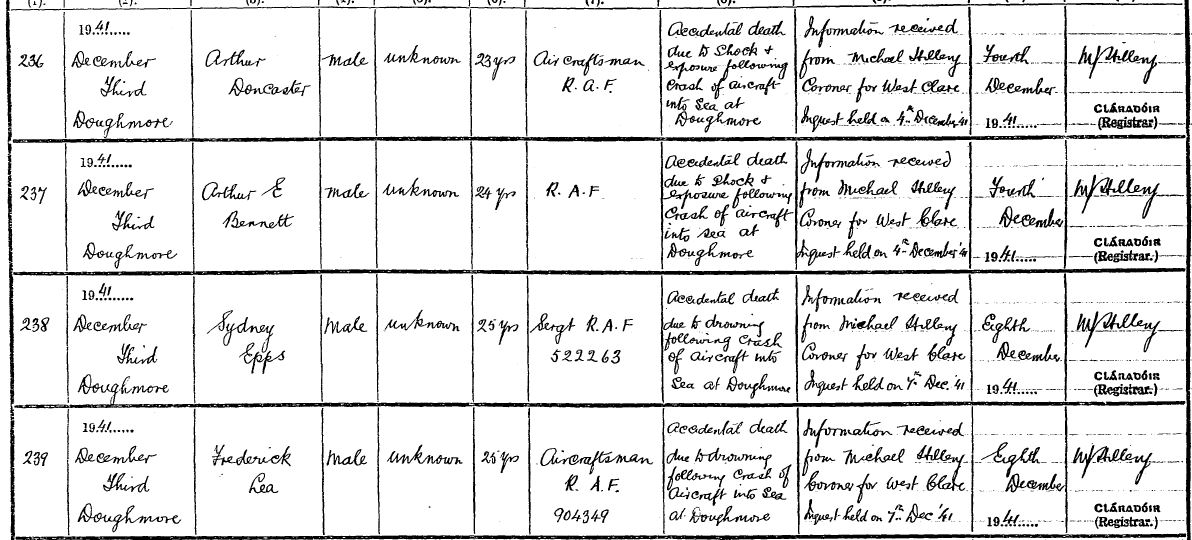
The Irish Examiner published the following news story on
Tuesday, December 9th:
CLARE PLANE CRASH.
Funeral Of British Victims At
Doonbeg.
Miltown-MaIbay, Monday.
Fred Lee, and Sydney Epps. of the Royal Air Force,
who met their deaths on Tuesday night, when their seaplane
crashed into the sea at Doonbeg, were buried with full
military honours at Miltown-Malbay Protestant Church yard,
yesterday.
Their bodies were washed ashore at Quilty on
Saturday, and the cortege from Quilty was large and
representative.
Military formed a guard of honour, three volleys
were, fired over the grave, and the Last Post sounded.
At the graveside was Flight-Lieut. Commander Fleming,
one of the two survivors. Another survivor was J. C.
Masterson.
Two other members of the crew, who were taken from
the water dead after the crash, A. G. Bennett and Arthur
Doncaster, were also buried with full military honours.
On December 9th Major J P O’Connell of the Southern Command
G2 section filed the following report following on from
earlier reports.
“The survivors, interviewed, would
not make a statement but in conversation later it was
learned that they had been on convoy patrol and according
to documents found their base is located at Lough Erne.
The wireless got out of order. They had been searching for a place to alight and decided to come down of White Stand, south of Carrowmore Point. At this particular place there were very high breakers and it would appear when the plane hit the water a float was torn off causing the plane to turn over.
Two bodies were washed ashore on
White Strand and identified as 180159 Arthur Ernest
Bennett and No: 743595 Leading Aircraftsman Arthur
Doncaster – next of kin in these cases not ascertained.
These were buried in the Protestant Graveyard at
Doonbeg at 16:30 hrs. on 5th instant with full military
honours. The British representative to Eire was
represented by Mr. R.W.G.Lywood. Captain M. Daly of this
Staff, who was present, accompanied this man to the scene
of the crash (G.H.Q. Instructions) and reports that Mr.
Lywood examined the keel of the ‘plane. It would appear
that he was trying to obtain information to build up a
report on the cause of the crash. He was also interested
in documents, remarking “I suppose your people picked up
these”.
On the 6th instant at 10:35 hours two further bodies were washed ashore on the strand 1 ½ miles west of Quilty. These were identified as Aircraftsman Frederick Lea, No: 904349, and Sergeant S. F. Epps (no number available) – next of kin in these cases not ascertained. These were buried at Miltown Malbay at 16.30 hrs on the 7th instant with full military honours. There was no representative from the British Legation present.”
This information from the Irish side is backed up from the
contents of the war diary for No. 18 Military Mission of the
British Army, the liaison unit which worked with the Irish
authorities. It records for the 5th and 6th of December
1941:
At 1930 hrs W/Comd Murgatroyd (I,
R.A.F.N.I.) requested Capt Green (C.I.O. 18 Mission)
to provide a car and conduct a R.A.F. expert to Co. Clare
where a R.A.F. flying boat had crashed. Capt Green
accompanied by Capt. Weldon (18 Mission) left LISBURN at
0030 hrs and reached LOUGH ERNE at 0400 hrs. At 0900
hrs they saw Gp/Capt Bates (O.C. Station) who said he was
sending P.O. Boddam-Witham with them to destroy certain
secret equipment. The party left at 0930 hrs and
reached ENNIS at 1600 hrs, where they met Comdt keane
(O.C. RINEANNA Aerodrome) who as i/c of all arrangements
re crashed aircraft. Comdt Kean stated that all
moveable objects had been sent to proper official
quarters, and it was decided to examine the articles which
had been sent to RINEANNA.
At 0900 hrs the British Party, accompanied by Comdt.
Keane, drive to KILKEE on the Clare coast where they met
W/Comd Lywood (British Air Attache) and then proceeded to
DOONBEG BAY where the hull of the flying boat lay.
They inspected this and carried out the destruction of
certain pieces of equipment. The mission party
returned to N. Ireland the following day.
A set of remains were washed ashore on the 21 December 1941
one mile west of Quilty. They could not be identified
other than they carried a jersey marked with the word PLUTO,
the name of the aircraft. The remains were buried as
unidentified and remain to this day, An Airman of the
1939-1945 War, Known unto God.
Finally, on 18 January 1942, the remains of another airman
were found on the shore of Mutton Island by a Thomas Boyle
from Quilty. The following day, Captain Daly and an NCO
obtained Thomas Boyle's canoe and he and another man, John
Kelleher, rowed the two army men and a coffin to the island.
Effects on the body allowed it to be identified as that of Sgt
M W G Fox. He was interred in Miltown Malbay cemetery
with the other three remains on the 20 January 1942.
During 1942 the father of Sgt Fox was written to directly by
Thomas Boyle requesting that Mr Fox might pay him five pounds
to cover the cost of damages he incurred on the day of the
recovery, and that the local authorities had not compensated
him. Mr Fox was upset by this correspondence which is
documented in both the Irish Army report and the British Air
Ministry AIR81 file. This resulted in an investigation during
which Captain Daly reported in August 1942: Both Boyle and Kelleher underwent
considerable hardships on that day in launching and
beaching the canoe and in assisting in carrying the body
about one mile across the rugged shore of the island to
where it could be loaded into the boat. Later a
claim for £5 was received from Thomas Boyle to cover the
entire cost. This claim, together with my
observations, was passed to the Q.M Southern Command,
Collins Barracks. No promise in respect of pay or
compensation were made by me or any other officer,
N.C.O. or men of this unit to Mr. Boyle on any
occasion.
The word canoe is used above in the original reports and likely refers to a local Currach type of rowing boat which were ubiquitous on the west coast of Ireland.
The graves in Miltown Malbay were marked for a period with
crosses furnished by the Irish Government, carrying a cross
symbol and the word Eire. In 1951 the process of marking
them with Imperial War Graves Commishion markers and which
they are marked with to this day. For a time, the care
and maintenance of the graves was not possible and the men's
names were entered on a screen wall in Grangegorman Military
Cemetery in Dublin. However, the graves are again tended
by the CWGC.
The aircraft was a Short Sunderland Mark II flying boat used
in the anti-submarine and convoy escort role. The
aircraft, carrying serial number W3988, was powered by four
Pegasus engines and was fitted with ASV radar which would have
been evidenced by a large array of poles on the spine of the
aircraft's fuselage. The wording in the Irish Army
reports suggest this was an aircraft fitted with a single
upper powered gun turret instead of the two manually operated
weapons fitted to Sunderland I and early Sunderland II
aircraft. The aircraft, operated by 201 Squadron, had
the name PLUTO painted on the nose below the cockpit
windows. The unit was at that time based at the RAF base
at Lough Erne in County Tyrone in Northern Ireland. The
flight may have taken advantage of the Donegal Corridor route
which allowed RAF aircraft to overflying a small portion of
Neutral Irish territory to access the Atlantic via Donegal bay
and avoid having to flying north around County Donegal.
This arrangement with the Irish government had been in place
since earlier in 1941.
The Squadron Operations Record Book for 201 Squadron provides
basic details of the missions flown by the crew members on
that day and in the weeks before hand. Just two days
before hand, the Squadron which had only seven aircraft at the
start of the month, carried out a formation flight of six
aircraft. The Squadron at that time used the codes ZM
painted on the fuselage ahead of the RAF roundal, followed by
an individual aircraft letter. W3988 carried the codes
ZM-P and was assigned the aircraft name PLUTO which was
observed by the Irish Army and which shows up in many of the
Irish reports.
F/Lt Fleming had flown patrol missions of up to 12 hours
duration with the Squadron during the months prior to the
crash. The same crew accompanied him on the 23rd of November
on a Convoy escort that had them land at Oban in Scotland. The
ORB records only the officers names for missions on the 6th,
7th, 9th, 20th, 22nd and 23rd of November.
The entry for the fatal mission were as follows:
Date: 3/12/41
Aircraft Type & Number: ZM/P.
Crew:
Duty: A/S Escort to Convoy (outbound).
Time Up: 0630
Time Down: -
Details of Sortie or flight: Not Met. At
1730 this aircraft dropped flares in vicinity of
Carrowmore Point in Co. Clare West Coast of Eire, and
crashed at 1830 hours after two attempts at landing.
All the crew left aircraft safely after the landing in
which a float was carried away; but in the rough seas,
they were unable to keep in the two dinghies and row the 2
to 3 miles to the shore (the aircraft landed into a
westerly wind, out to sea). All had 'mae-wests' on,
and F/Lt Fleming* D.F.C. and Sgt. Masterson drifted ashore
unconscious in them, and were interned. The bodies
of some of the rest of the crew were washed up also.
*In the above extract from the AIR27/1178 file Fleming's
surname was written as Fletcher in the details
column, despite being correct in the crew column, it has been
corrected above to avoid confusion. There was at that
time a F/Lt Fletcher who commanded another crew in 201
Squadron and the author likely mixed up the two names.
The details were likely typed up by 201 Squadron personnel in
the days following the events and the full details of the
survival of the two men were not known at Lough Erne.
F/Lt James Grant Fleming 40380 Royal Air Force
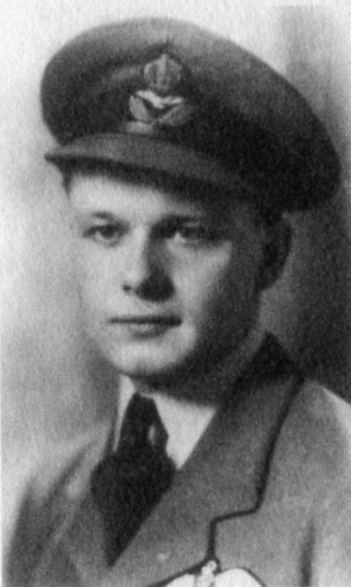 Aged
24, from Calgary
Aged
24, from Calgary
On the 24 Oct 1937, Grant's name appears on the manifest of SS Ausonia arriving in the UK for RAF duty, destined to the Scottish College of Aviation, Ayr, with other Canadians, Raymond F Bridgeman, James D Cody, William J Ditto, Douglas T McPherson (the latter may not have sailed)
Grant appeared in numerous Canadian newspaper articles during
1940 and 1941 where he was one of the early Canadians to be
found involved in the war. A number of these articles are
presented at the back of this report but they allow us to
determine who his parents were. Fleming appears as ‘Grant
Fleming’ in most of these articles and in 1941 it was reported
that his father John Warren Fleming had passed away while
Grant was home on leave. It is assumed that his mother had
died prior to this and her name was Elsie Agnes Fleming.
This resulted in a family friend Dr. Samuel C W Morris being
named as next of kin on war time reports. Indeed the Morris
family had published in Canadian newspapers a copy of a letter
sent to them in the immediate aftermath of the crash. This can
be seen further on in this report.
The portrait photo above is taken from R. Keefer's book, "Grounded In Eire", credited to the Irish Military Archives.
During 1941, Fl/Lt Fleming was no stranger to encountering
difficulties while flying large flying boats as evidenced by
this story which was published in the 8th of May issue of
Flight magazine in the United Kingdom. This relates to his
flight on Catalina AM266. The photo of Grant below comes
from his RAF Ferry Command crew card which lists his many
Ferry flights during 1941-1944.
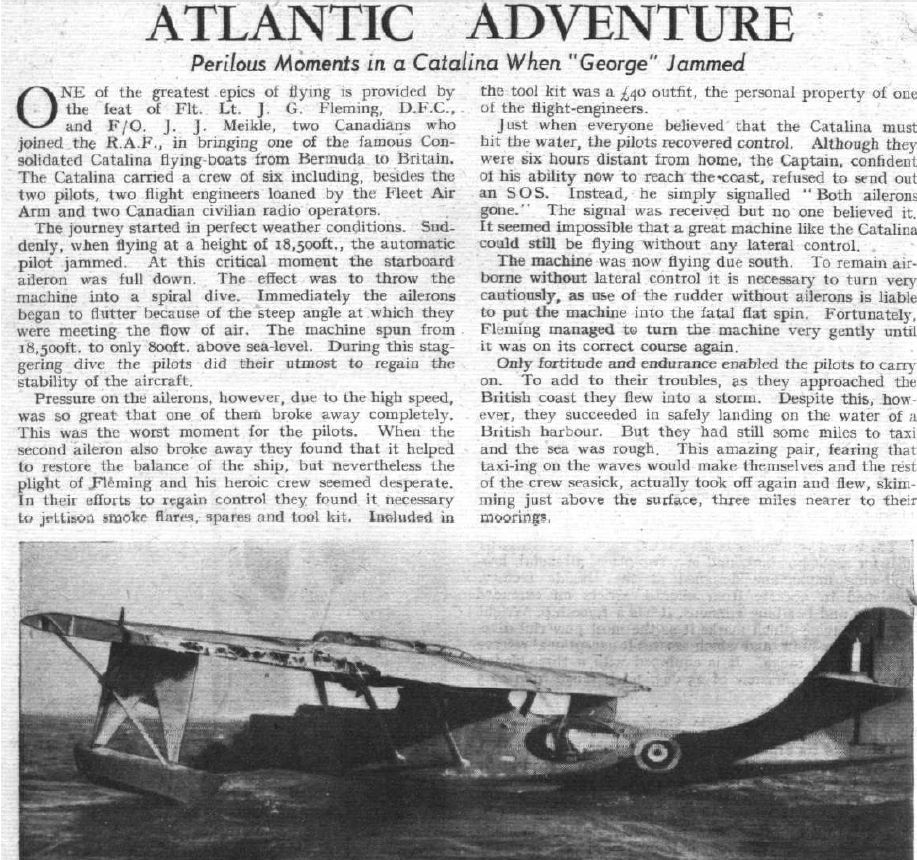
The Irish Army file goes on to say that three local men seen
James struggling in the water and took it upon themselves to
go to his aid. The Irish Army recorded these men's names as
Simon McCarthy, and uncle and nephew pair, Michael John Stack
and Michael Stack. He was taken to the house of Michael Stack
where he was later found by Captain Daly of the 13th Cyclist
Squadron, Irish Army. He was brought to Mallow military
hospital in Cork and placed under guard there. While there, in
conversation with Irish officers he told them of the
aircraft's mission. He was discharged on December 10th and
interned in the Curragh camp on the following day.
Officers at the hospital forwarded to the Army Intelligance
staff the following statement from Fleming, recorded at the
hospital. The dates are mixed up somewhat but is the
most recent statement from him after the events.
We had been out on patrol from 4
a.m. on the morning of the 4/12/'41 from Lough Erne,
Northern Ireland. On that evening owing to running short
of petrol I decided to try and come down on the see off
the coast. I succeeded in doing this, but the float
on the port wing snapped off and I found it necessary to
take-off again. I was then undecided what course to adopt,
but finally cane down on the sea again. This I
accomplished, but unfortunately the outer engine of the
port wing broke off. This caused the Boat to list
and she began to sink. I ordered the other members of crew
to abandon the Plane, which they did. I left the boat
last, but was carried under water and had to dive deeper
to extricate myself. I came to the surface and managed to
climb on to one of the rubber boats which I found
floating. I was almost immediately washed off this
and had to keep myself afloat the best could, after what
must have been a couple of hours, I felt sand under my
feet, I was washed ashore by the breakers and taken to a
house nearby. While in the water I saw, Sgt. Masterson and
Sgt. Bennett.
Masterson was trying to help Sgt. Bennett, who became
panicky, and had to let go of him.
The following article was published in the January 6th 1942
Calgary Herald, Dr Morris having submitted details of Grant
Flemings letter to the newspaper. (from Google news Archives)
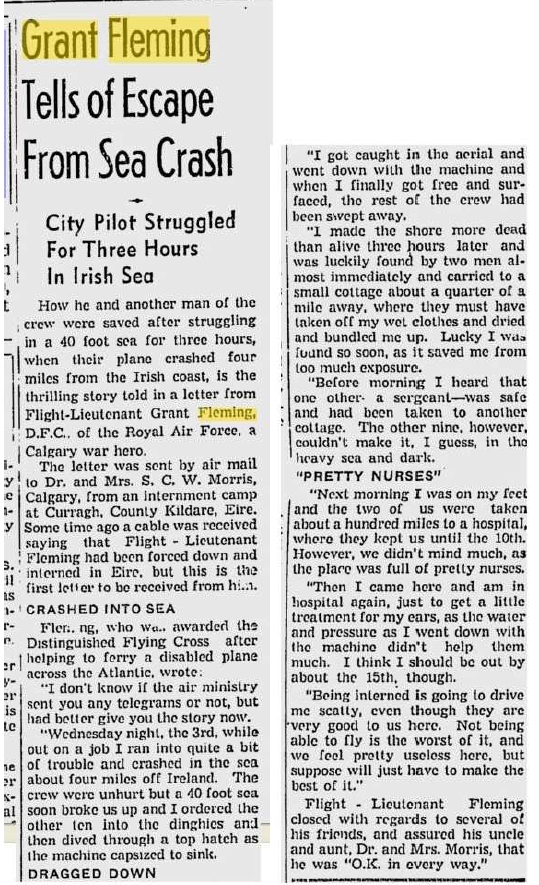
He was interned with James Masterson in the Curragh Camp
where he became the ranking British officer and leader of the
Allied internees. He was an avid planner and organiser of
escape attempts which culminated in his escape from the camp
in August 1942 along with two other officers.
He returned to active service with RAF Ferry Command and then with Coastal Command flying Mosquito photo reconnaissance aircraft over Europe. It was during his last mission, on 6th September 1944, to Munich, that his Mosquito, serial MM300, was shot down by a Messerschmitt Me262 jet piloted by Ofw. H. Göbel from Epr. Kdo 262, crashing near the village of Oberschlettenbach.
James and his navigator Harold Clarke, both of 540 Squadron
are buried in the Rheinberg War Cemetery in Germany.
Hugh Haliday of Canada compiled the following awards
biography for S/Ldr Fleming on the Canadian
Air forces Association website:
FLEMING, F/O James Grant (40380) -
Distinguished Flying Cross - No.201 Squadron - awarded as
per
London Gazette 21 February 1941. Born in Calgary, 23
May 1917; home there. Gunner in Royal Canadian
Artillery, 1936. Appointed Acting Pilot Officer on
Probation, 9 January 1938. Directorate of History
holds Ferry Command deliver cards (document 84/44-3) which
include him, confirming his Canadian birth and
address. He was active in Ferry Command from December 1940
(when he set out to deliver PBY AM266 to Britain)
until September 1941 and again from January 1943 to
September 1943. The card also has a photograph of
him. Missing 6 September 1944. AFRO 2231/44 dated 13 October
1944 (reporting him missing) confirmed him as Canadian in
the RAF. No citation other than "for gallantry and
devotion to duty in the execution of air operations".
Specifically listed in AFRO 1292/41 dated 7
November 1941 as a Canadian in the RAF who had been
decorated as of that date. AFRO 1085/45 dated 29
June 1945 (confirming his death) identified him as a
Canadian in the RAF. Air Ministry
Bulletin 3067 refers, stating, "Some of the above officers
have been on convoy escort duty in all
kinds of weather by day and night." Public Record Office
Air 2/9498 has recommendation drafted 29
October 1940 by W/C C.S. Richard, Commanding Officer,
No.201 Squadron. The
document is annotated, "A Canadian Officer".
Since the outbreak of war this officer has done more than
700 hours operational flying, and has never failed to
carry out his duties in the air in anything but an
exemplary way, consistently showing courage and resource
in his interpretation of his orders. Although this officer
has not taken part in any spectacular flight, it is
thought that he is very worthy of consideration for
reward, as his example as Captain of his aircraft has
always been of the highest order.
The Group Captain in command of RAF Station Sullom
Voe added his remarks:
The award of the Distinguished Flying Cross to Flying
Officer Fleming is recommended. A Canadian with three
years in the Service, this officer has carried out a great
amount of operational flying since the outbreak of war,
and has always displayed keenness and resource.
On 31 December 1940 the Air Officer Commanding, No.18
Group, wrote:
This officer is an outstanding pilot in a very good
flying boat squadron. He has flown with consistent
gallantry, skill and devotion to duty throughout the first
16 months of the war and continues to set a very fine
example to all ranks in No.201 Squadron.
Flying Officer Fleming's conduct in the execution of
operational tasks has been proved over a long period to be
pre-eminently of the type for which the Distinguished
Flying Cross was instituted as public recognition and I
strongly recommend that this be awarded to him.
The Lethbridge Herald in 1945 printed his name among those
listed in RCAF Casualty Lists with Dr. Morris as his next of
kin.
This following image is from his Ferry/Transport Command
card:

P/O Wilfred Sefton EMMETT 401377 Royal New Zealand Air
Force
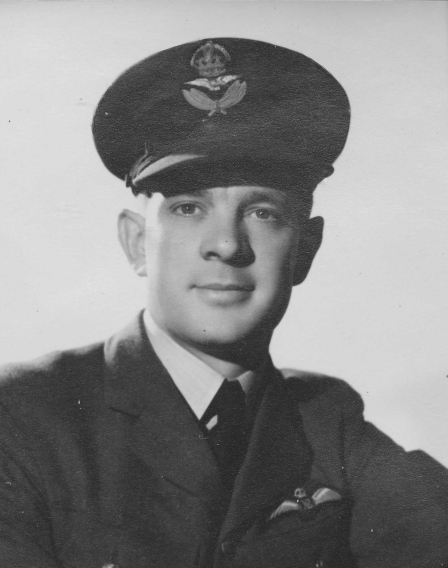 Age: 26,
the son of James and Mary Emmett, of Wanganui, Wellington, New
Zealand and husband of Peggy Viola Emmett.
Age: 26,
the son of James and Mary Emmett, of Wanganui, Wellington, New
Zealand and husband of Peggy Viola Emmett.
His name is recorded on Panel 63 of the Runnymede Memorial.
Wilfred was the co-pilot of the aircraft.
Wilfrid began his campaign against Germany it seems a little
earlier than his crew mates. New Zealand newspapers carried
the story of his being fined in January 1939 for commandeering
a wind vane from a German vessel in a harbour in New Zealand.
His many surviving cousins and nephews in New Zealand
remember him with fondness. A letter sent to the local
newspaper there received a great number of replies from family
members sharing
information.
The newspaper article from 1939 showing Wilfred began his
campaign against German naval forces earlier than most!
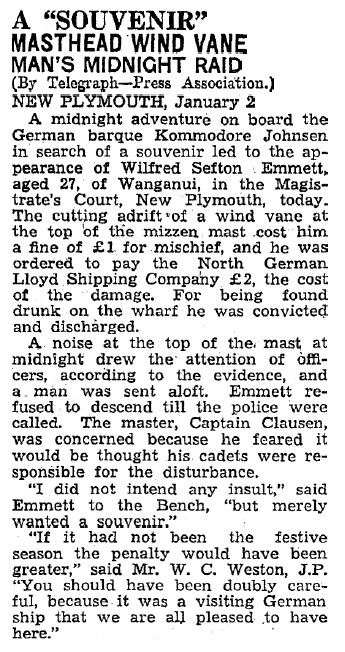
(Evening Post, Volume CXXVII, Issue 1, 3 January 1939, Page
13)
Sgt Eric Willows Jackson 999009 Royal Air Force
Volunteer Reserve
Aged 24, Eric was the son of Thomas Norman and Dorothy
Marguerite Jackson, of Whinbrow, 54 Gledhow Wood Road, Leeds,
Yorkshire. The 1939 register shows Eric resident
at home with his parents. His occupation is listed as Commercial
Traveller Oil Paint Varnish, his father being a Oil
Varnish & Paint Merchant with Ross and Company, as
mentioned in the obituary below.
As his remains were never identified as recovered, his name
was entered on Panel 46 of the Runnymede Memorial.
Sgt Jackson’s death was reported in The Yorkshire Evening Post, on Monday, December 22, 1941 in an article about his father’s death which occurred just 17 days after his sons.
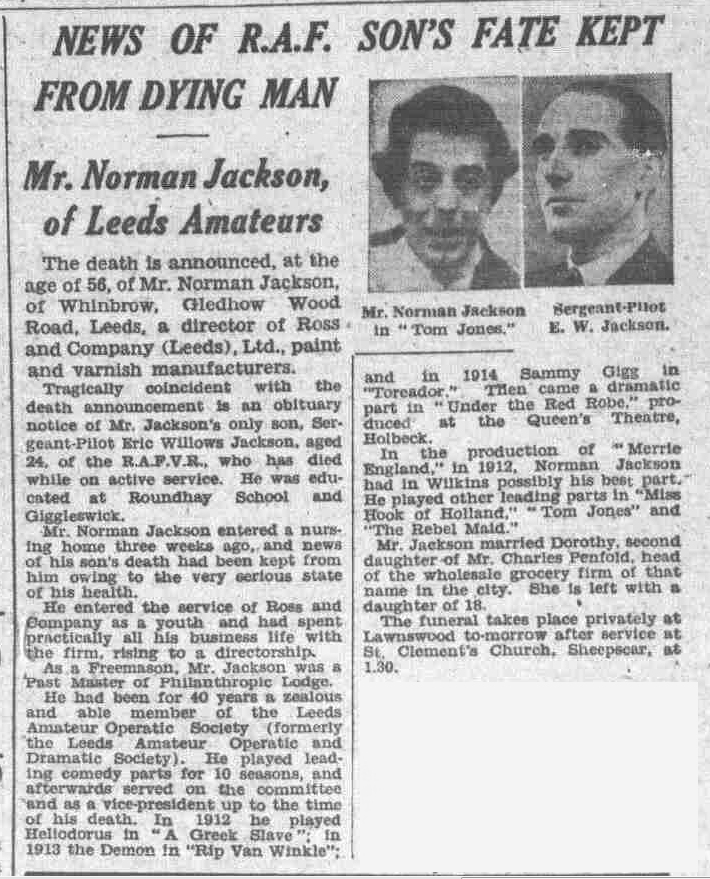
He left one sister named June who passed away in 1985. He was
the third pilot on the aircraft and would have taken over from
Fleming or Emmett during the long patrol missions.
P/O Eric Gerald Marker 101048 Royal Air Force
Volunteer Reserve
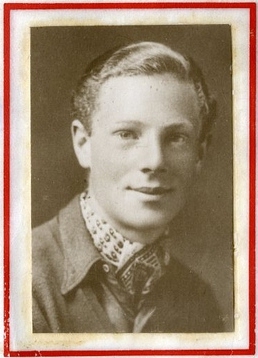 Age: 20, Son
of Edward Richard and Margaret Anne Marker, of Gittisham
Hill, Honiton, Devon.
Age: 20, Son
of Edward Richard and Margaret Anne Marker, of Gittisham
Hill, Honiton, Devon.
Name entered on Panel 33, Runnymede Memorial.
In 1939 he was resident at home with his parents and listed
as a student. He is remembered in the memorial book of
Sherborne School, the portrait photo being scanned at the
following location.
https://www.flickr.com/photos/sherborneschoolarchives/94122
14943/
Below is a photo of Eric supplied by his nephew Richard
Marker. Richard believes that his grandmother was so upset by
her son’s tragic loss that many photos of him were destroyed.
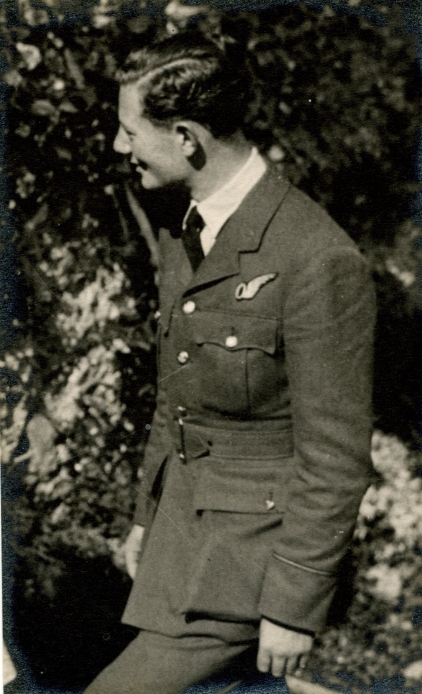
Eric Marker was the Observer on the crew, better described as
the Navigator. His photo shows him to carry the winged O badge
for this trade.
The Devon and Exeter Gazette on December 19th, 1941 carried a
short notice of his having been posted missing.
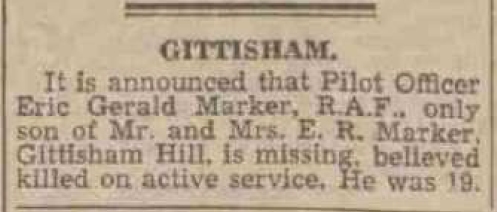
He is remembered on the small 1939-1945 War Memorial in
Gittisham.
Sgt Sydney James Epps 522263 (W.Op./Air Gnr.) Royal Air
Force
Aged 25, Son of Sydney Read and Elizabeth Epps.
He is buried in Milltown Malbay Church of Ireland
Churchyard. For some years, the graves were not
maintained and the name recorded on a screen wall in
Grangegorman Military Cemetery, Dublin, but they are now again
under the care of the Commonwealth War Graves Commision.
His sister visited Ireland in 1990’s and passed on details to
historian Martin Gleeson of Limerick. She visited his grave
and was able to meet with a local man who had been present
during the events of December 1941. Sadly, so far, his
nephews have been unable to find any remaining photos of
Sydney.
He was born 14 April 1914 at Ilford, Essex. He joined the RAF
in 1936, aged 18 and was posted to Iraq the same year. He
trained as a WOp/AG in 1940 and joined 201 Squadron later the
same year.
Sgt Maurice Walter Gerald Fox 933498 (W.Op./Air Gnr.)
Royal Air Force Volunteer Reserve
Aged 20, Son of Lionel Thomas Andrew and Edith Emma Fox, of
Erith, Kent.
Buried in Milltown Malbay Church of Ireland Churchyard
The 1939 register shows Maurice and his parents resident at No
5 Brook Street in Belvedere, Kent. His father was a
storekeper and young Maurice was a General Clerk per the
register.
Little else is known about Sgt Fox at this time.
His brother Peter Thomas Fox, a Corporal in the 11th Kings
Royal Rifle Corps was killed in Greece in December 1944.
Their father Lionel was an infantry veteran of the First
World War and had been injured twice in 1916. He passed
away in 1948.
Sgt James Cannell Masterson 911625
James was born on the 9th of September 1920 to William and
Alice (nee Cannell).
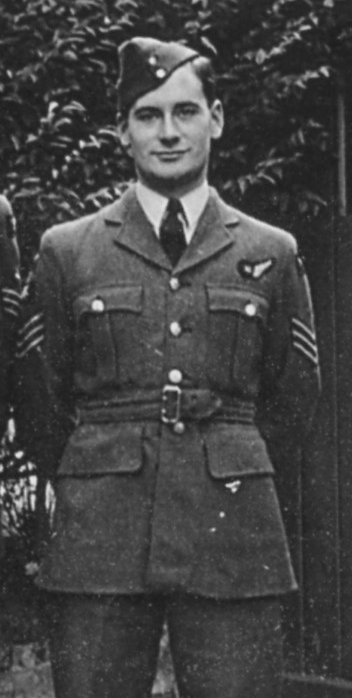 On the 1939 register his occupation is given as
Apprentice to meat trade, whereas by 1943 he lists occupation
as Wholesale Meat salesman. James had started his RAF
service on 17 January 1940 and was a Wireless Operator, Air
Gunner but also performed Mechanic role. He had attended
the Coastal Operational Training Unit at Invergordon in
Scotland.
On the 1939 register his occupation is given as
Apprentice to meat trade, whereas by 1943 he lists occupation
as Wholesale Meat salesman. James had started his RAF
service on 17 January 1940 and was a Wireless Operator, Air
Gunner but also performed Mechanic role. He had attended
the Coastal Operational Training Unit at Invergordon in
Scotland.
James survived the landing and was interned in the Curragh
Internment Camp in County Kildare Ireland. He was released
from the camp in October 1943 and filed an Escape and Evasion
report which contained the details above. His narrative
of the events leading to his internment are surprisingly
short, stating only:
I was a member of the crew of a Sunderland flying boat which took off from LOUGHERNE (Northern Ireland) on 2 Dec 41 and came down in the sea off CO.CLARE. I was rescued and sent to THE CURRAGH CAMP for internment.
He also recorded his participation in escape attempts on 3
February 1942 and 17 August 1942, during both of which he was
unable to escape.
The newspaper clipping was written during the war by Canadian
fellow internee and journalist Philip Calder RCAF:
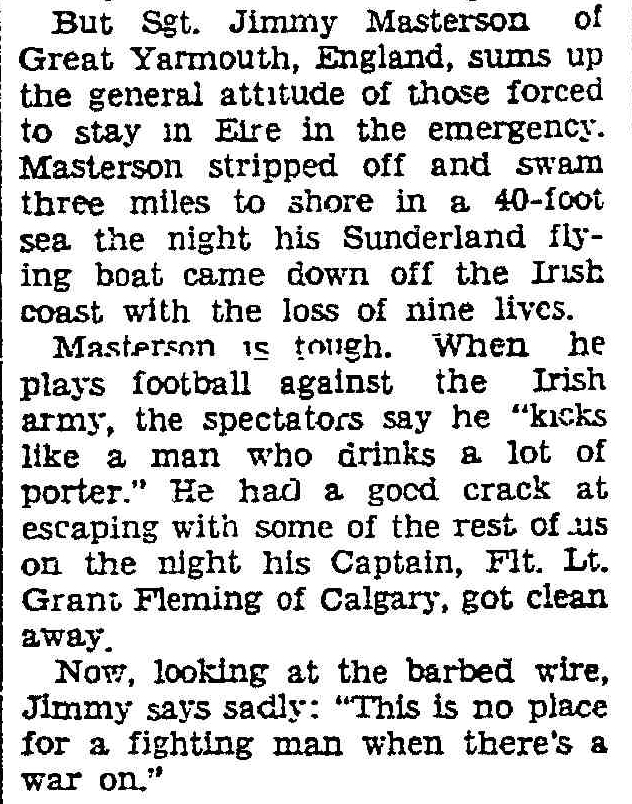
He returned to his native Norfolk after the war and died in
2006. His obituary in 2006 recounted his life's story:
“The funeral was held yesterday for a
prize-winning swimmer and former prisoner of war who died
suddenly after a day out at the races.
James Masterson first became a Norfolk champion
swimmer aged nine and went on to win hundreds of awards
during his lifetime.
He was a familiar sight swimming in the sea off
Yarmouth throughout his life, always taking part in the
yearly pier-to-pier race. A member of the Yarmouth
Swimming Club, he broke the British masters 800m record in
2000, clocking a time of 16 minutes and seven seconds in
the over-80 category.
And the 85-year-old, of Alexandra Avenue, was never
far from water, building up a successful fishmongers on
Nelson Road Central after returning from the war.
Mr Masterson's wife Betty, with whom he celebrated
his diamond wedding anniversary in January, said that her
husband would always be remembered for his love of the
sea.
"Swimming was his biggest passion and achievement,"
she said. "He was a great sportsman and won so many
championships in his lifetime. He was happiest when in the
water and excelled at long distance races. James was also
a keen footballer, but it was swimming that he loved the
most."
Mr Masterson served in the RAF during the war and was
captured after his plane was downed off the coast of
Ireland, staying in a prisoner of war camp there for the
last two years of the war.
Daughter Elizabeth Lake said: "If there was any
prisoner of war camp to be placed in, this was the one.
Ireland was neutral and he was there with Germans and
Italians. They were all allowed out during the day to work
in Dublin, and while there he was even able to compete in
the Irish swimming championships. A book was written about
the camp a few years ago featuring dad, which got him on
to Newsnight, among other television shows,
talking about it."
On his return he went into business with his father,
building the fishmongers into one of the biggest in the
town.
He married Betty in 1946 and the couple built up many
friends in the town, with Mr Masterson joining the
freemasons and the Round Table.
He died after a massive heart attack walking back
from a day at Yarmouth Races on Saturday, July 25, with
Betty at his side.
The funeral was held in St Nicholas Church yesterday.
Along with Betty, Mr
Masterson leaves children Richard, Tony and Elizabeth and
six grand-children.
(Ref:http://www.edp24.co.uk/news/obituaries/james_masterson_1_690437)
His family scattered his ashes into the Bay where he crashed
in December 1941. While there, they met with the Shanahan
family.
The obituary of course errors slightly in stating there were
Italian detainees in the Camp, only members of the German
armed forces were interned. Also, the detainees were
internees, and not actually 'prisoners of war'.
LAC Frederick Walter Lea 904349 (Flight Mechanic)
Royal Air Force Volunteer Reserve
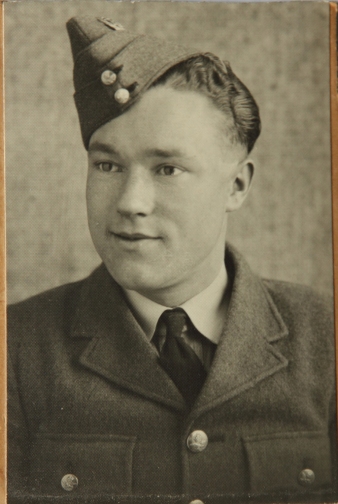 Aged 21, Son of
Walter and Elizabeth Ethel Lea, of Poringland, Norfolk.
Aged 21, Son of
Walter and Elizabeth Ethel Lea, of Poringland, Norfolk.
He is buried in Milltown Malbay Church of Ireland Churchyard
Fredericks two nephews, Greg and Mark were kind enough to
assist in some
memories of LAC Lea. Their mother, sadly, passed away last in
November 2009. Many years ago Mark and his wife visited
‘Freddys’ grave in Ireland on his mothers behalf. She had
never seen the grave so they managed to take some pictures for
her.
He is listed in the 201 Squadron Record Book as being a
Rigger. At this time the role of trained air gunner had not
been arranged in the RAF and ground tradesmen flew as the
aircraft defensive gunners. Not much later, the minimum rank
for flying aircraft was raised to Sergeant and the air gunner
role became an specialized role in itself.
The following family photo of Frederick Lea’s grave stone was
also supplied by Greg.
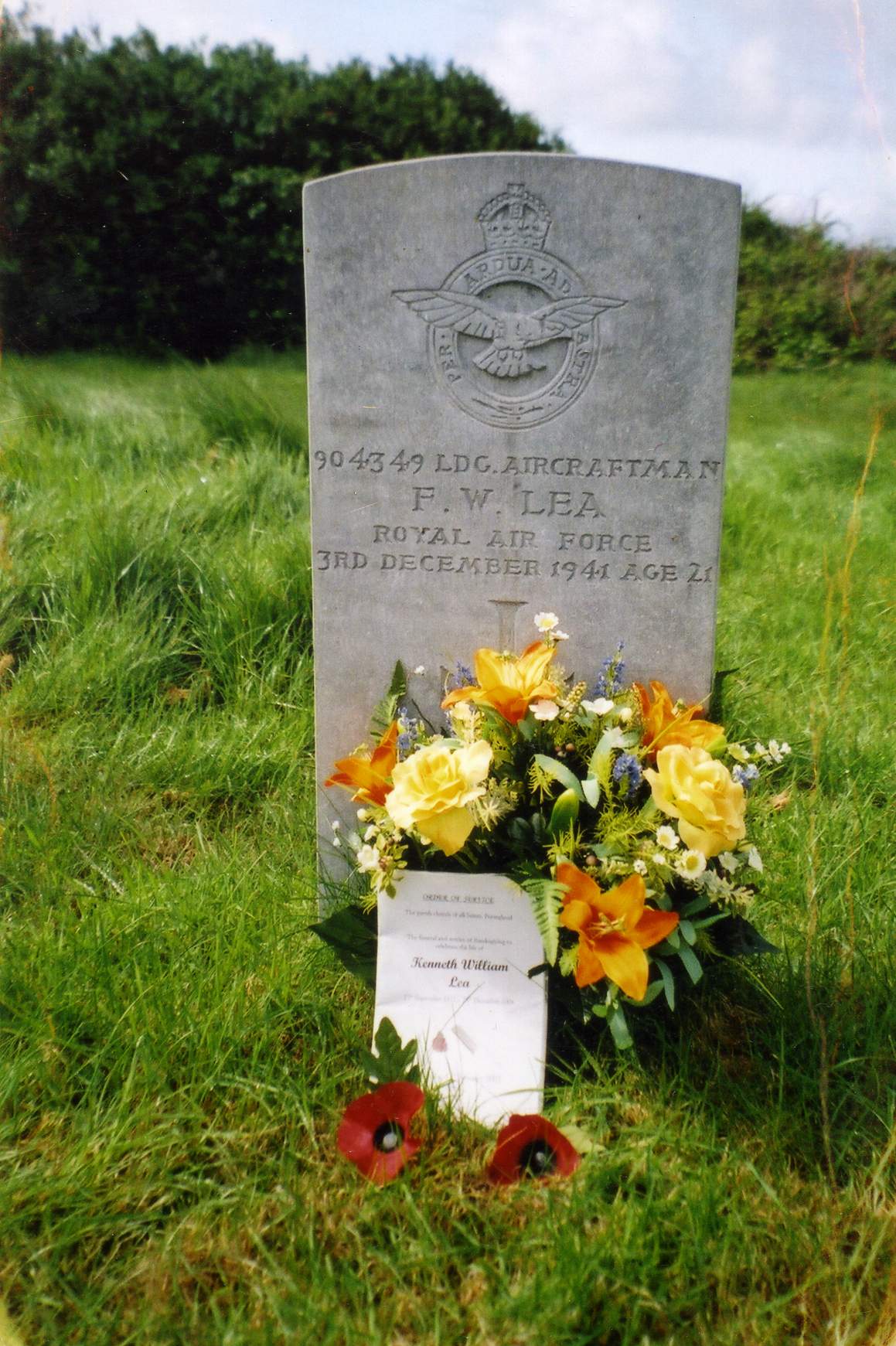
LAC Arthur Doncaster 743595 Royal Air Force Volunteer
Reserve
Aged 30, Son of Ernest Arthur and Ida Dorothy Doncaster.
He is buried in Killard Church of Ireland graveyard on the
road out of Doonbeg.
Arthur was born in 1912 in Mansfield, Nottingham. He had an
infant brother who passed away in 1916 while only in his
second year.
Arthur’s mother passed away in 1923 it seems and his father
died in June of 1941.
He is listed in the 201 Squadron Record Book as being a Fitter
and was flying as an air gunner similar to Fred Lea. The
Nottingham Evening Post of January 21st, 1942 carried an
obituary.
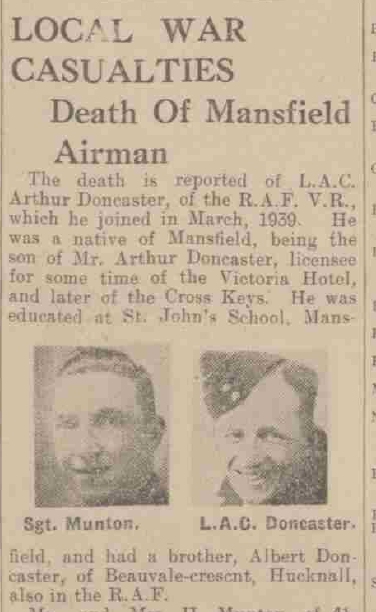
The obituary mentions the name of a brother, Albert who lived in Hucknall.
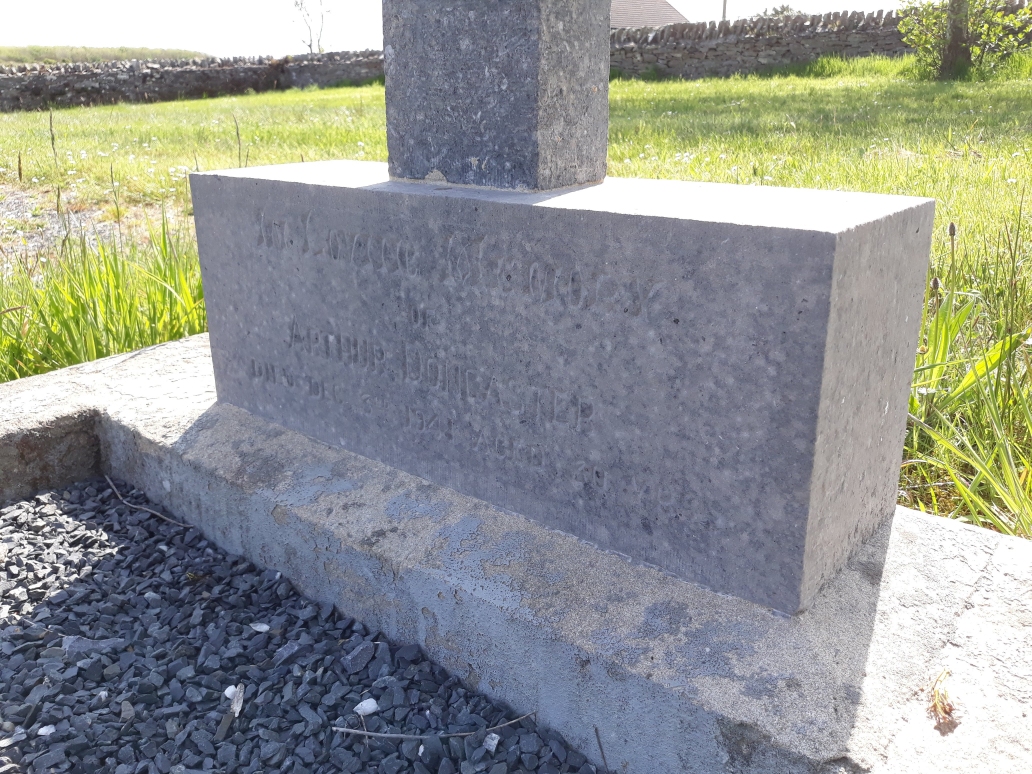
LAC Andrew Patrick Walker 972825 Royal Air Force
Volunteer Reserve
Aged 19, Son of Thomas and Anna M. Walker, of Glasgow.
Name entered on Panel 57, Runnymede Memorial.
He is listed in the 201 Squadron Record Book as being a Fitter
and was flying as an air gunner similar
to Fred Lea.
AC1 Albert Everall Bennett 1081395
 Royal
Air Force Volunteer Reserve
Royal
Air Force Volunteer Reserve
Aged 19, Albert was the son of Thomas Nelson and Annie Bennett
from Liverpool and the husband of Norah Elizabeth Bennett also
of Liverpool. Albert's wife lived at Belhaven Road in
Liverpool.
The Liverpool Echo of 17 December 1941 carried a short notice
and a small photo of ACT Bennett, which read:
Mrs A Linforth, 48 Hunt Street, Everton, has received news
that her son, Aircraftman First-Class Albert Everall
Bennett, has been killed on service. In another month
he would have reached his 20th birthday. He was an old
boy of Brae Street Council School, Edge Lane.
He is buried in Killard Church of Ireland Cemetery alongside
Arthur Doncaster
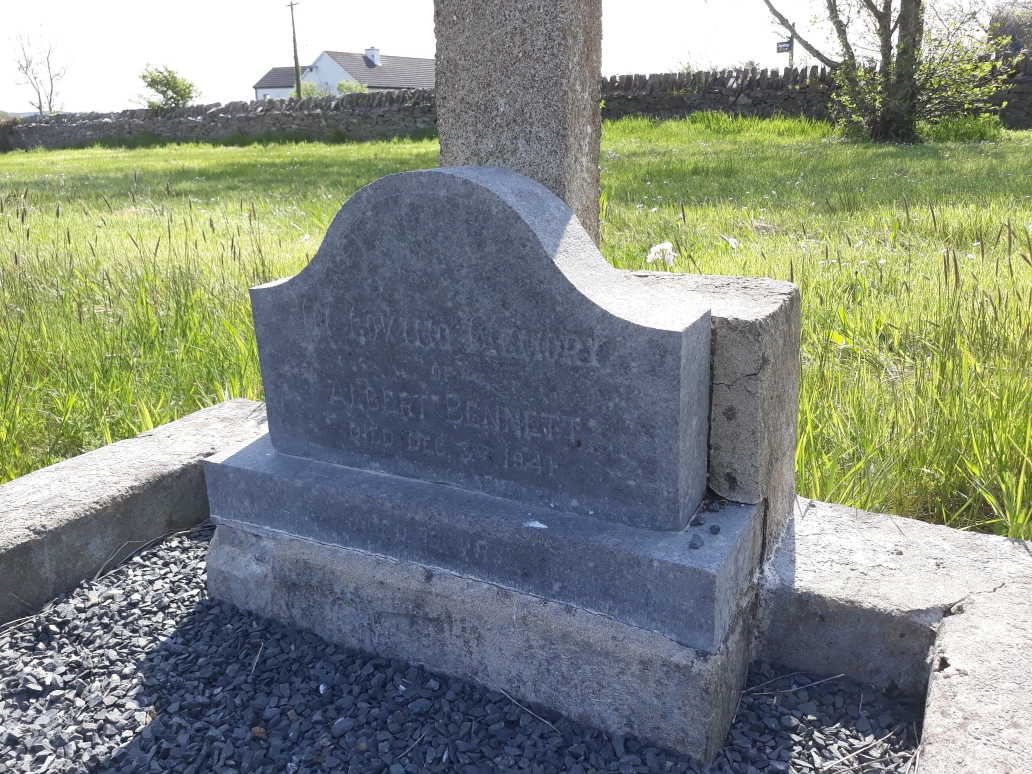
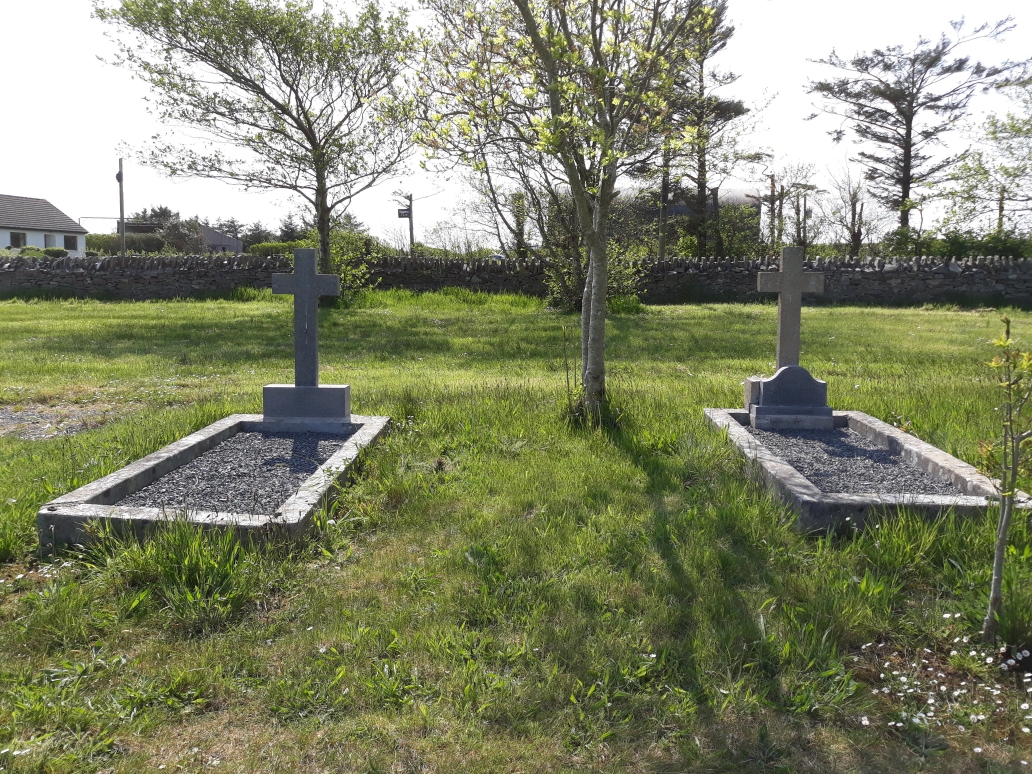
One notable element of the sad loss of the men of Sunderland
W3988 was the involvement of local people from the Doughmore
Strand area in the efforts to assist the crew members.
With the aircraft having flown around the Clare coast for some
time before landing, people were alerted to the possibility
that there might be people in danger at sea.
A set of notes received from the Gardai at Doonbeg are within
the Army G2 file, undated, but carrying times of receipt,
indicating they were received on the night of the events
reported:
21:05 Martin Purtill* L.D.F. member
reported that one of crew landed and is seriously
injured. He is in a house in Carrowmore.
Doctor O'Connell of Kilkee is on his way to attend him.
Military + Gardai are there.
Capt. P Daly sent in this LDF man from Carrowmore to
Doonbeg. Dr. Called for from Doonbeg Gda St*.
Kilkee now gone there from to Carrowmore.
He had no further particulars.
The notable actions of some locals were summarized by Captain
Daly of the 13th Cyclist Squadron in a letter marked
confidential, dated 20 December 1941, some weeks after the
events. This
was signed for by a 2nd/Lt Spicer in place of Capt.
Daly. It was sent to a Captain O'Brien in the
Message Center of Sarsfield Barracks, Limerick.
Sir, have the honour to inform you
of a number of facts in connection with the crash to the
British Sea—plane “Pluto” on Doughmore Strand, Co. Clare
on the night of the 3rd December 1941, and which in my
estimation are worthy of the highest praise.
(1) Messers. Simon McCarthy, Micheal John Stack and
Michael Stack (junior) of Clonmore, Doonbeg rescued Flight
Lieut. Fleming, whom they observed struggling in the rough
sea. At a risk to their lives they entered the water
and brought him safely ashore to the house of Ml.
Stack. It was their quick activity and
resourcefulness that was responsible for saving the life
of Flight Lieut. Fleming.
(2) Michael O’Donovan of Clonmore reported to me that
the ‘plane had crashed at Doughmore and that two men had
been brought ashore. He cycled five miles to carry this
information to me. It was his initiative that
resulted in I getting to the scene of the crash as quickly
as possible, with my military party, before the civilian
population arrived and so we were able to keep
unauthorised persons from interfering with the
wreckage.
(3) Patrick Shanahan, Currawmore North, Doonbeg,
found Sgt. Masterson. R.A.F.
unconscious outside the window of his
residence. He brought him into the house and gave
him every attention and care possible. This man
Patrick Shanahan, had a brother killed by the Black and
Tans during the “Trouble” in Ireland and still had no ill
feeling against this British Airman and gave him every
thing possible to make him Comfortable.
In view of the above facts, I would like, if it were
possible to thank the a/m. personnel publicly because I am
sure that their acts were heroic and noteworthy. Besides,
these people would appreciate a word of Praise and thanks
from the Army Authorities and it would also encourage the
civilian population to still greater co-operation should
the occasion arise in future.
Four of the men, Simon McCarthy, both Michael Stack's and
Patrick Shanahan were awarded parchments by the Royal Humane
Society, which was reported in the Irish Times of May 27, 1942
and the Irish Independant on 31 Jul 1942. Simon McCarthy
and the two Michael Stacks were reported in the newspapers as
being awarded theirs for the saving of an airman while Patrick
Shanahan's was reported as being for the unsuccessful attempt
to save another man.
The archives of the Royal Humane Society (RHS) reveal a summary of the details sent to the RHS in connection with this incident. The original letters and details have been destroyed but the society ledgers recorded the following (question marks indicate hand writing difficult to decipher):
Case Number: 56902
Salvor (Name, address and Occupation; age:
Simon McCarthy, Carpenter, 34
Michael Stack, Labourer, 42
Michael Stack, Labourer, 21
Patrick Shanahan, Farmer, 34
All of Co. Clare, Eire
Saved:
Flight Lt., James G Fleming, R.A.F. (listed
against McCarthy and the two Stacks)
L.A.C. Doncaster, R.A.F.
(Decd) (listed against Shanahan)
Time and place:
6:45 PM, 3rd Dec 1941, In the sea, Doughmore Doonbeg,
Carrowmore, Co. Clare
Particulars of Accident:
The Sunderland flying boat
'Pluto' crashed into the sea 1 mile from shore, and the
crew were thrown into the water, some of whom were
drowned. Sea - very rough. strong
breakers. dark - foggy. Rescue - salvors up to
waist. danger of being swept off feet. deep
holes in vicinity.
Exertions of the claimant:
McCarthy on the beach by aid
of a torch, saw a body, he rushed in the water up to his
waist, seized the body then called to the two Stacks for
aid. The 3 of them got Fleming out, took him to
cottage of Stack and restored him. Shanahan 1/2 hr
later saw body of Doncaster went in up to his waist and
brought it out. Art, ??? unsuccessful.
Shanahan also gave treatment to Sergt, Masterson, who got
ashore unaided, dressed his wounds and summoned a doctor.
Witnesses to the accident:
Statements from Salvors and
salved.
Person reported by:
(1) Mrs E G Elliot, Miltown
Malbay, thro the Hon. Rep. Dublin
(2) The undersecrety of State, Air Ministry
Honorary Rewards:
Parchment to each (4)
The letter below accompanied the parchment received by Simon
McCarthy.
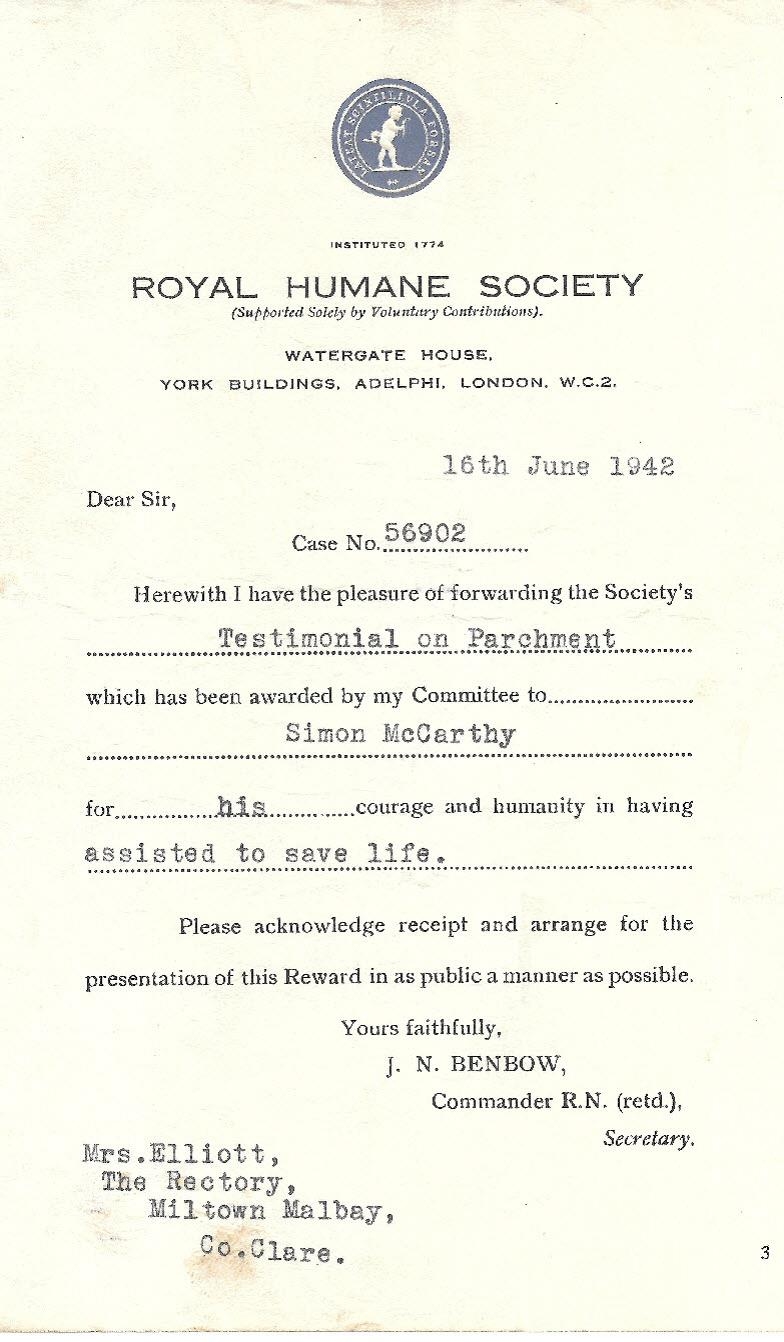
The following then are the parchments received by Simon
McCarthy and one of the Michael Stack's.
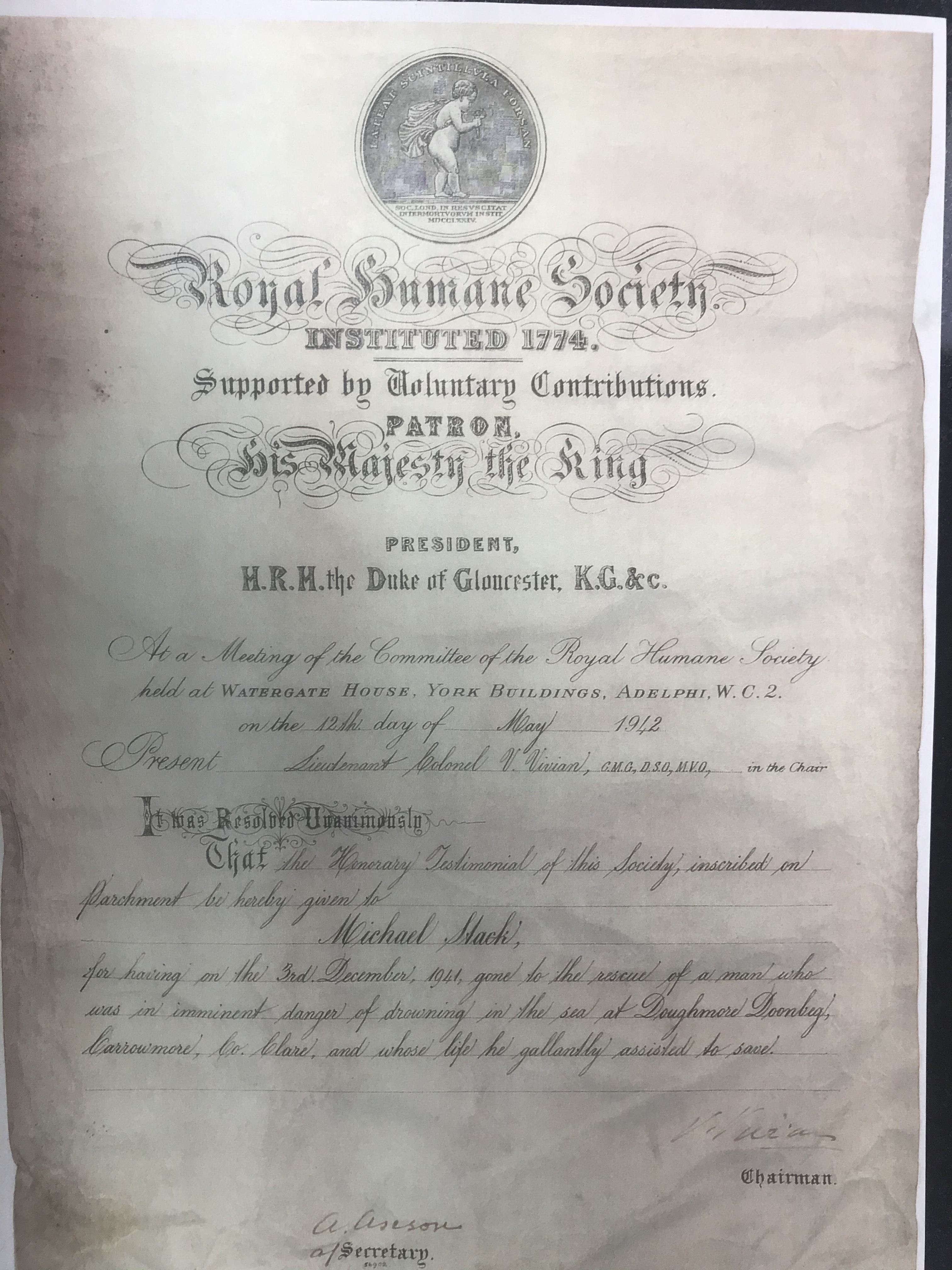
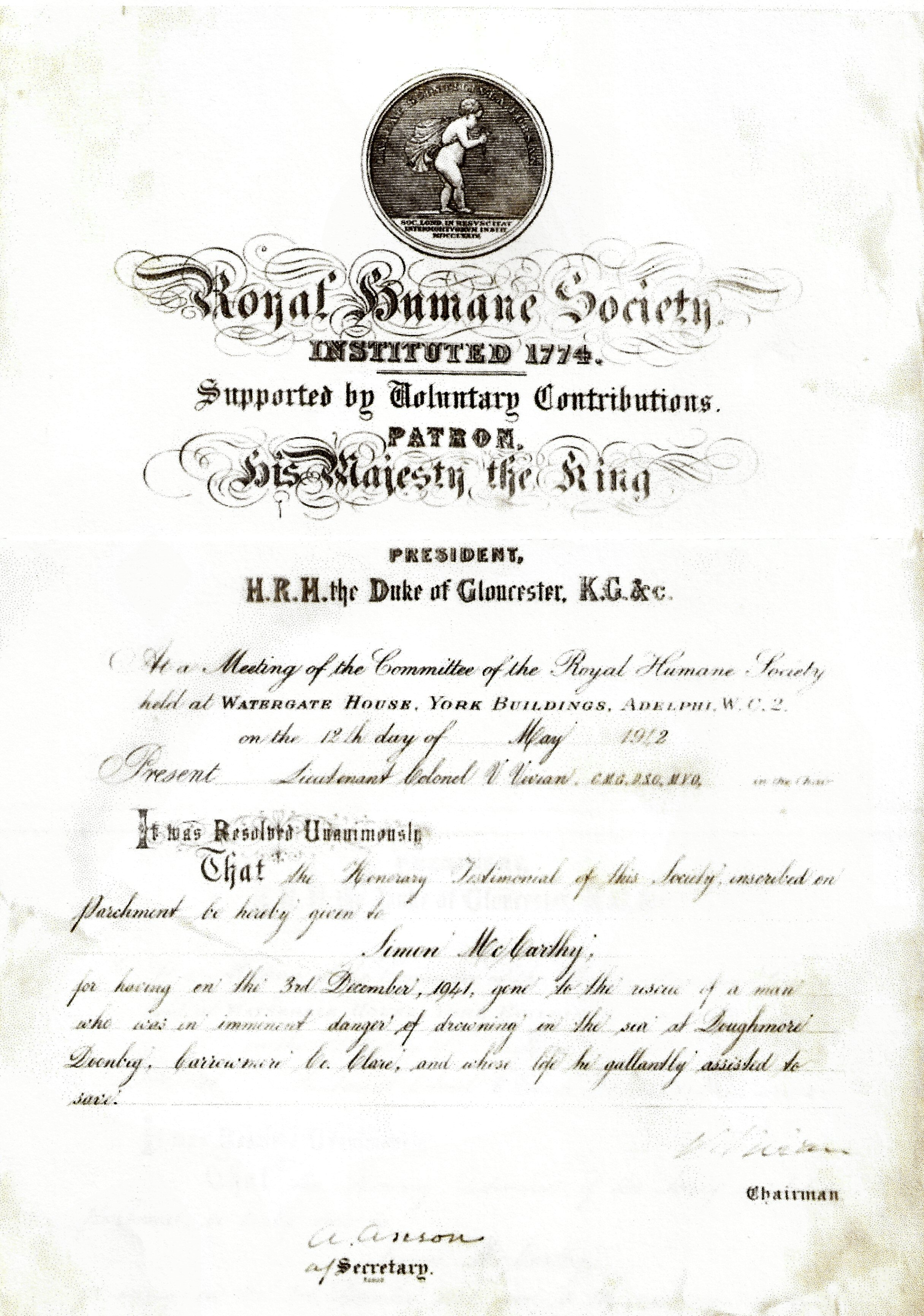
An account of the nights efforts are also contained in the
book "Catalina’s & Sunderland’s on Lough Erne by Joe
O'Loughlin. The narrative for that chapter was obtained
with the assistance local people, but who did not wish as Joe
writes, to have their names mentioned.
The following article by local woman Nuala Shanahan was
provided by the Masterson family. It was published in a
local history publication Doonbeg, 'A Story to Tell', editor
Joe Hurley. The article quotes her grandfather, Patrick
Shanahan as having been on the beach and assisting in the
recovery of 'Sgt Bennett' from the water. However,
Michael McCarthy, son of Simon McCarthy mentioned in the
article, advised that his father was not in the company of
Patrick Shanahan at any time during the evening and they did
not take Bennett from the water together. Sgt Bennett
was, as recounted above, taken from the water by Michael Stack
assisted by his nephew, Michael Stack. Patrick Shanahan
himself in 1989 mentioned to a researcher that Garda Sergeant
McDonagh had attempted artificial resuscitation on 'Sgt
Bennett' but based on the RHS ledger contents transcribed
above, this may have been Doncaster and the names became mixed
up over the years. The article is presented here
nonetheless with the above caveat.
The article does mention the two Michael Stacks, but doesn't mention their having been also awarded parchments. It likely highlights the conditions on that cold December night on a dark beach with many people doing their utmost to help in terrible conditions.
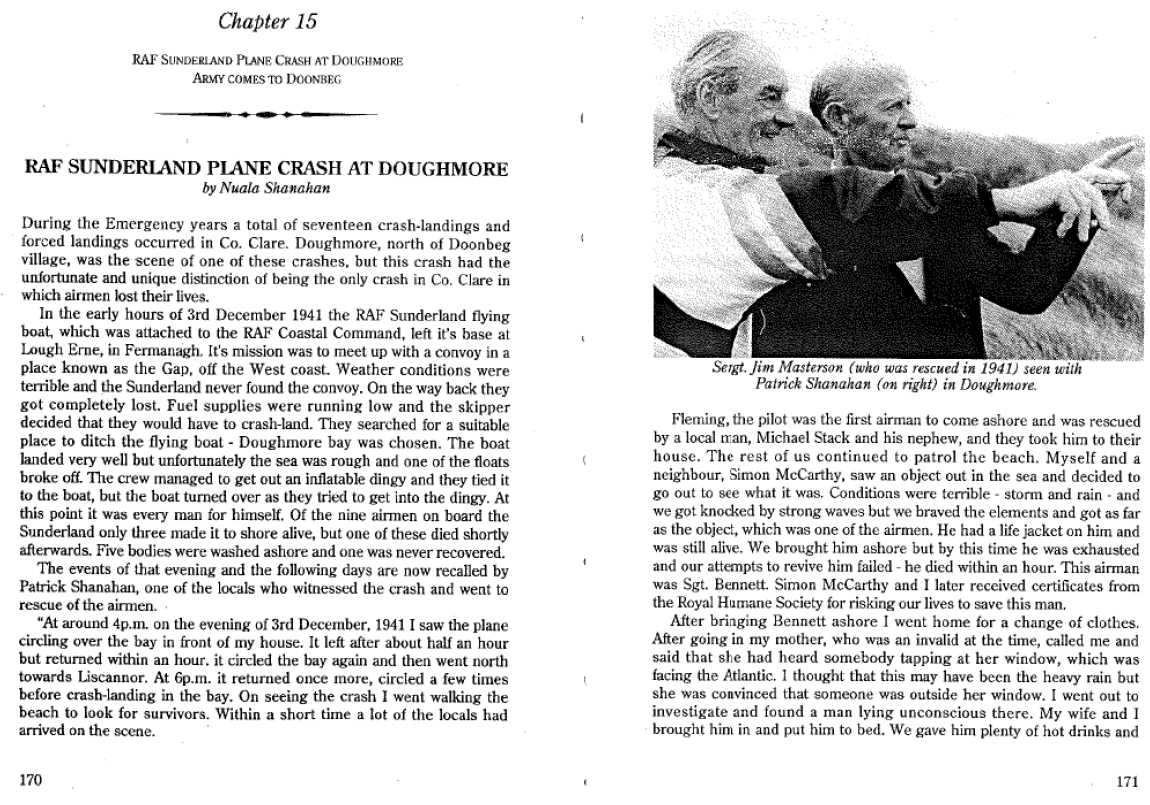
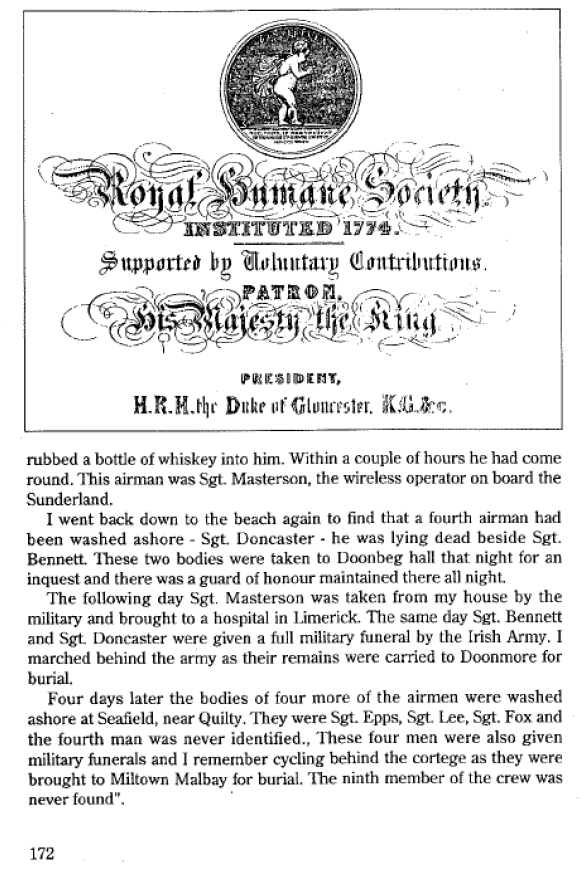
Irish Newspapers in March 1983 printed a number of confusing and inaccurate news reports around the time that James Masterson returned to Ireland for the first time, and co-coincided with the publication of the book, Broken Wings by John Clive. Jim Masterson was one of the internees consulted as a source for the fictional work by the author.
A tourist information board with basic details of the events
of the night of 3 December 1941 is located at the Doughmore
beach car park next to the hotel and golf course.
In December 2021 in the midst of the COVID19 pandemic, the
people of Doonbeg and surrounding areas gathered on the beach
at Doughmore and held a touching ceremony to remember the lost
airmen. The ceremony was recorded and can be viewed here
on YouTube.
Compiled in 2022 by Dennis Burke with the assistance of the
relatives of the crew of Sunderland W3988 mentioned
above. Thanks also to Michael, the son of Simon McCarthy
and the Stack family. Information sourced from Irish
Military Archives File G2/X/0922 and UK Air Ministry
AIR81/10711 casualty file in the UK National Archives.
The Royal Humane Society Archives were also consulted.
